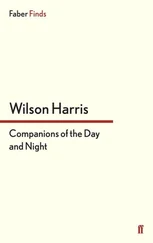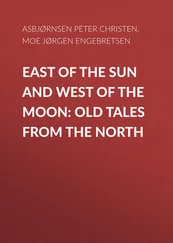3 3Some scholars prefer Antiochus II (261–246 BCE), on the grounds that Tatian calls “Antiochus” the third king after “Alexander” (BNJ 680 T 2), and that the Alexander in question must have been the child king Alexander IV. However, it seems inherently implausible that a work dedicated to a Seleucid monarch would have claimed a connection with the insignificant and potentially problematic Alexander IV. Nor is Antiochus II an obvious dedicatee: it was Antiochus I who took a special interest in Babylon since his time as crown prince and regent of the eastern provinces (294–281 BCE).
4 4E.g. Tiamat = Thalassa at BNJ 680 F 1b (6) and BNJ 685 F 1b; Bel = Zeus at BNJ 680 F 1b (8); Ea = Kronos: BNJ 680 F 4 (14) and BNJ 685 F 3b (2); Aššur-bān-apli = Sardanapallos: BNJ 685 F 5 (8). See also γόγγαι ~ κριθαί at BNJ 680 F 1b (2); and Sarachero ~ ἡ κοσμητρία τῆς Ἥρας at BNJ 680 F 13.
5 5See especially AD 2 -187A obv. 11ʹ, where Antiochus III is offered the cloak of Nebuchadnezzar upon his return from the west. The Seleucids generally avoided invoking Achaemenid precedent for their actions. Reviving Neo-Babylonian traditions of kingship seems to have been part of this wider strategy; see Haubold 2013a: 130–132.
6 6To these we might add κοσμήσας ἱεροπρεπῶς, προσχαρίσασθαι and (προσ-)κατασκευάζειν. For parallels see, e.g., Ma 1999: 309, First Teian Decree for Antiochos III and Laodike III, lines 16 (χαρίζεσθαι) and 45–46 (ἱεροπρεπέστατα).
7 7For similar formulations see, e.g., Ma 1999: 369–370, Decree of the Citizens of Apollonia under Salbake for Pamphilos, lines 1–2 and 9, 19, and 23 (διοικεῖν); Polybius 4.48.9–10 (τὴν βασιλείαν τηρεῖν).
CHAPTER 5 Lucian, Philo of Byblos, and Ps.-Meliton
J.L. Lightfoot
Classical literary texts are mainly very blinkered sources for the religions of the Hellenistic and Roman Near East. They tend to notice the gods of the cities and religious centers which had long fallen within the purview of Greek culture, especially the commercial cities of the Phoenician coast. Sidon and Tyre were put on the map by Homer and Herodotus, respectively; Herodotus had visited the temple of “Heracles” in the course of his chronological researches (2.44), and he also gave an interesting account of the temple complex of “Zeus Belos” in Babylon (1.181–3), “Belos” being an eponym and genealogical construct endlessly recycled in classical sources on Phoenicia, Arabia, and Babylonia since his first appearance in the Catalog of Women (Hes. fr. 137.2 M.-W.). But problems are immediately apparent. Authors use established equations for non-classical deities which ipso facto import a bias; so, too, the literary genres in which the religions of the Near East find mention also tend to impose their own way of looking. Of course, an indigenous source might confirm only the extent to which classical culture had indeed penetrated a given cult or locale; nevertheless, the paucity of material from Hellenistic and Roman Syria means that alternative perspectives are in very short supply.
This chapter deals with three literary texts which seem to offer more than familiar topoi and routine ethnographic sound bites. One is written in Greek; another claims to be a Greek translation of a Phoenician original; the last is in Syriac, which a Greek original may or may not underlie. None escapes classical influence, but all offer the tantalizing possibility that an insider perspective might somehow be preserved alongside the intellectual structures of the Greek or Greco-Roman literary genre in question.
Lucian: On the Syrian Goddess
The first text is Lucian’s On the Syrian Goddess ( De Dea Syria , or DDS from now on), and it is a hybrid in various senses. It is a short treatise which offers itself as a detailed eye-witness account of the temple of Hierapolis (modern Membij) not far from the Euphrates in northern Syria, and its cult of the Syrian Goddess. The Syrian Goddess is Atargatis, a deity with a long and complex history whose antecedents, if we believe that diachronic surveys can shed light on a god’s character in the here and now, can be found in the female consort of the north Syrian thunder-god in the second millennium BCE (Lightfoot 2003: 1–85). By the time we encounter her here, she seems to be a multi-purpose “great goddess” figure, not, as far as we can see, as strongly linked with eroticism as her Semitic counterparts Astarte and Ishtar, but certainly of a nurturing disposition, delighting in her doves and sacred fish – but also, perhaps, with an appetite for the shedding of blood which recalls (as does her iconography) her Anatolian cousin whom the Greeks called Cybele, Rhea, and the Great Mother. DDS manages to be highly informative about the temple and its practices yet elusive and indirect about the goddess herself. Its opening chapters advertise the temple and offset it against various Phoenician temples, none of which match it for holiness. A couple of set-piece sequences follow, the first concerning myths of its divine founder, in which other variants are set aside in favor of the one that connects it with Dionysus; the second discusses the present temple’s connections with Stratonice, wife of Seleucus I and later of his son, Antiochus. Then we learn of its topography and layout, working inwards from its position in the city to the innermost Holy of Holies with the cult statue; and the last section is a tumble of miscellanea on priests and cult personnel, festivals, rituals, and bits and pieces of devotional practice.
The text is ascribed to the second-century satirist Lucian of Samosata in all the manuscripts that carry it, but the ascription has been challenged for most of the last four hundred years of the text’s history. The authorship question is more than a matter of literary pigeon-holing; it is at the center of the text’s interpretation. Lucian sets up his literary persona as a provocateur, a foe of fraud and pretension; mythological burlesque and literary parody are two of his staples. If the text were his, it would be yet more demonstration of the versatility, verve, and wit we know were his – but would be a blow for those who wish to use the text in any sense as a historical source. Now, I believe that the text is genuinely Lucian’s (Lightfoot 2003: 184–208). It is quite easy to show that it lies within the range of his literary interests, and I detect affinities with his particular way of realizing the author and dialect that is being imitated here (below). The days of naïve and uncritical reading, when DDS (or Philo of Byblos) could be quarried without methodological angst as a religious-historical source, are long gone; on the other hand, it is also possible to err in the opposite direction, to be determined to find laughter where a more subtle effect is intended. The uncertainty of exactly where DDS is located in between these poles is why it remains a controversial and deeply interesting text.
It is essentially a work of ethnography, and conforms to a classical scheme which goes back at least to Herodotus, in whom it is first attested. Where Herodotus tackled Egypt and Scythia in terms of history, land, and customs, he perhaps established and certainly helped perpetuate a pattern which could later be deployed in specialist monographs on particular countries (Trüdinger 1918). 1Lucian has adapted this pattern to suit the foundation-myths (1.12–16 recall Hdt. 4.5–15 on the colonization of Scythia), layout, and nomoi associated with the temple. Even the artful disarray of the final section on nomoi is much more planned than it appears at first sight: a well-established alternative to the ordering of such material under headings was associative listing (Trüdinger 1918: 25–26), and Lucian shows himself master of the artful segue (§§45–46/47: the lake and ritual “descents to the lake”; §48 ff.: other major festivals in Hierapolis’s sacred calendar; §§49–51: the Spring Festival and autocastration; §§52–53: burial customs for the galli and for Hierapolitans generally). A penchant for the wondrous and exotic in the selection of nomoi is of course thoroughly Herodotean; the notices on tattooing and hair-cutting with which the treatise ends carefully give the impression of miscellaneous after-thoughts while in fact conveying profound suggestions about national and personal identity (“all Assyrians wear tattoos”; “to this day there remain in the temple my lock and my name”).
Читать дальше












